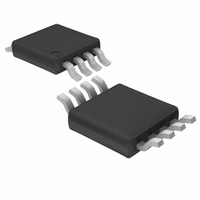LTC2856HMS8-1#TRPBF Linear Technology, LTC2856HMS8-1#TRPBF Datasheet - Page 13

LTC2856HMS8-1#TRPBF
Manufacturer Part Number
LTC2856HMS8-1#TRPBF
Description
IC TXRX RS485/RS422 8-MSOP
Manufacturer
Linear Technology
Type
Transceiverr
Datasheet
1.LTC2856CMS8-2PBF.pdf
(20 pages)
Specifications of LTC2856HMS8-1#TRPBF
Number Of Drivers/receivers
1/1
Protocol
RS422, RS485
Voltage - Supply
4.5 V ~ 5.5 V
Mounting Type
Surface Mount
Package / Case
8-MSOP, Micro8™, 8-uMAX, 8-uSOP,
Lead Free Status / RoHS Status
Lead free / RoHS Compliant
Available stocks
Company
Part Number
Manufacturer
Quantity
Price
APPLICATIONS INFORMATION
High Speed Considerations
A ground plane layout is recommended. A 0.1μF bypass
capacitor less than one-quarter inch away from the V
is also recommended. The PC board traces connected to
signals A/B and Z/Y should be symmetrical and as short
as possible to maintain good differential signal integrity.
To minimize capacitive effects, the differential signals
should be separated by more than the width of a trace
and should not be routed on top of each other if they are
on different signal planes.
Care should be taken to route outputs away from any
sensitive inputs to reduce feedback effects that might
cause noise, jitter or even oscillations. For example, in the
full-duplex LTC2857-1, DI and A/B should not be routed
near the driver or receiver outputs.
The logic inputs have 100mV of hysteresis to provide noise
immunity. Fast edges on the outputs can cause glitches in
the ground and power supplies which are exacerbated by
capacitive loading. If a logic input is held near its threshold
(typically 1.5V), a noise glitch from a driver transition may
exceed the hysteresis levels on the logic and data input
pins causing an unintended state change. This can be
avoided by maintaining normal logic levels on the pins
and by slewing inputs through their thresholds by faster
than 1V/μs when transitioning. Good supply decoupling
and proper line termination also reduce glitches caused
by driver transitions.
Figure 8. Supply Current vs Data Rate
75
70
65
60
55
50
45
10
R
2
DIFF
= 54Ω
10
DATA RATE (kbps)
3
C
L
= 1000pF
10
C
4
L
= 100pF
285678 F08
10
5
CC
pin
Cable Length vs Data Rate
For a given data rate, the maximum transmission distance
is bounded by the cable properties. A typical curve of cable
length vs data rate compliant with the RS485 standard is
shown in Figure 9. Three regions of this curve refl ect differ-
ent performance limiting factors in data transmission. In the
fl at region of the curve, maximum distance is determined
by resistive losses in the cable. The downward sloping
region represents limits in distance and data rate due to
AC losses in the cable. The solid vertical line represents the
specifi ed maximum data rate in the RS485 standard. The
dashed line at 250kbps shows the maximum data rate of
the low-EMI LTC2856-2, LTC2857-2, and LTC2858-2. The
dashed line at 20Mbps shows the maximum data rates of
the LTC2856-1, LTC2857-1 and LTC2858-1.
Cable Termination
Proper cable termination is very important for good
signal fi delity. If the cable is not terminated with its char-
acteristic impedance, refl ections will result in distorted
waveforms.
RS485 transceivers typically communicate over twisted-
pair cables with characteristic impedance ranging from
100Ω to 120Ω. Each end of the network should be termi-
nated with a discrete resistor matching the characteristic
impedance or with an LTC2859/LTC2861 transceiver with
integrated termination capability.
Figure 9. Cable Length vs Data Rate
(RS485 Standard Shown in Solid Vertical Lines)
100
10k
10
1k
LTC2857-1/LTC2857-2
LTC2858-1/LTC2858-2
10k
100k
DATA RATE (bps)
RS485 MAX
DATA RATE
1M
MAX DATA RATE
LOW-EMI MODE
10M
MODE MAX
DATA RATE
NORMAL
285678 F09
100M
13
285678fe














